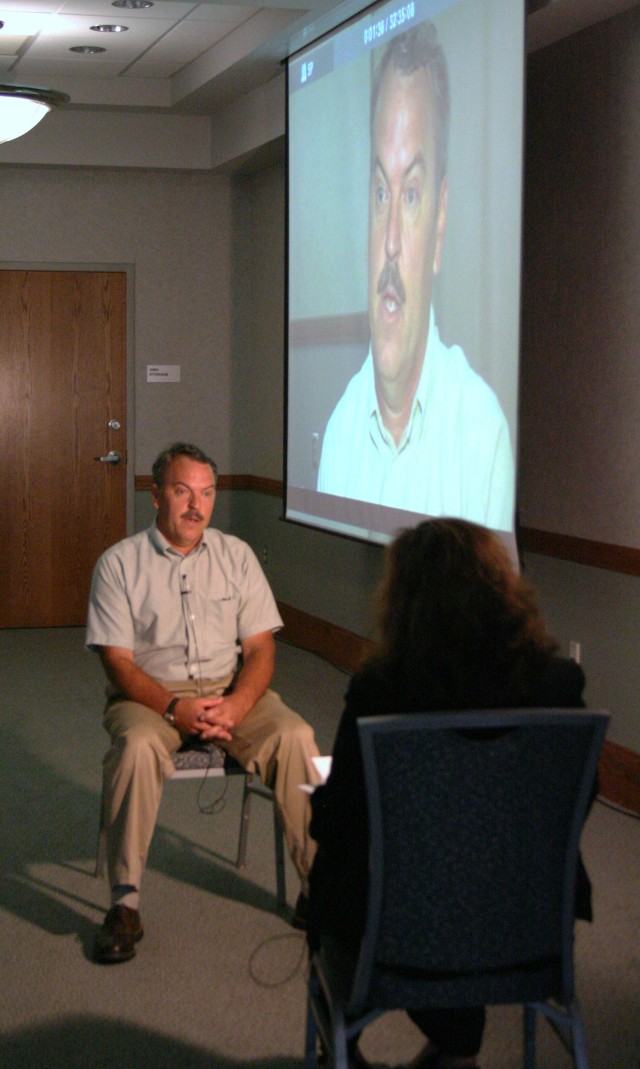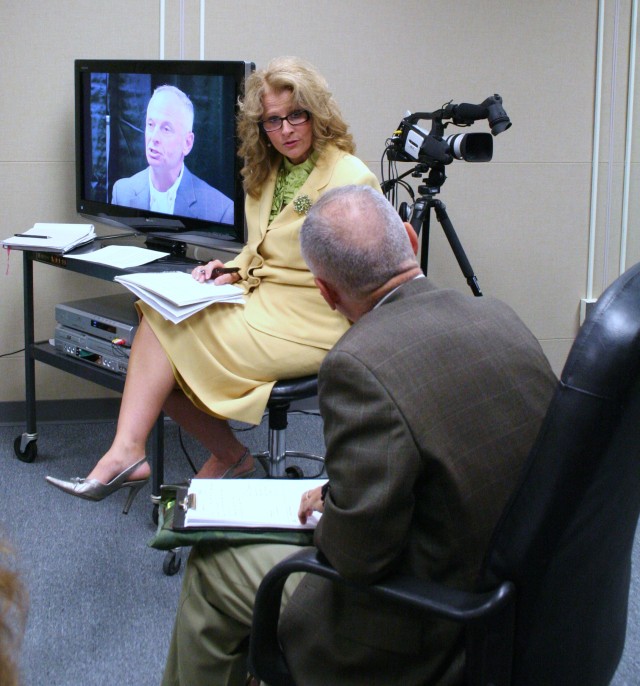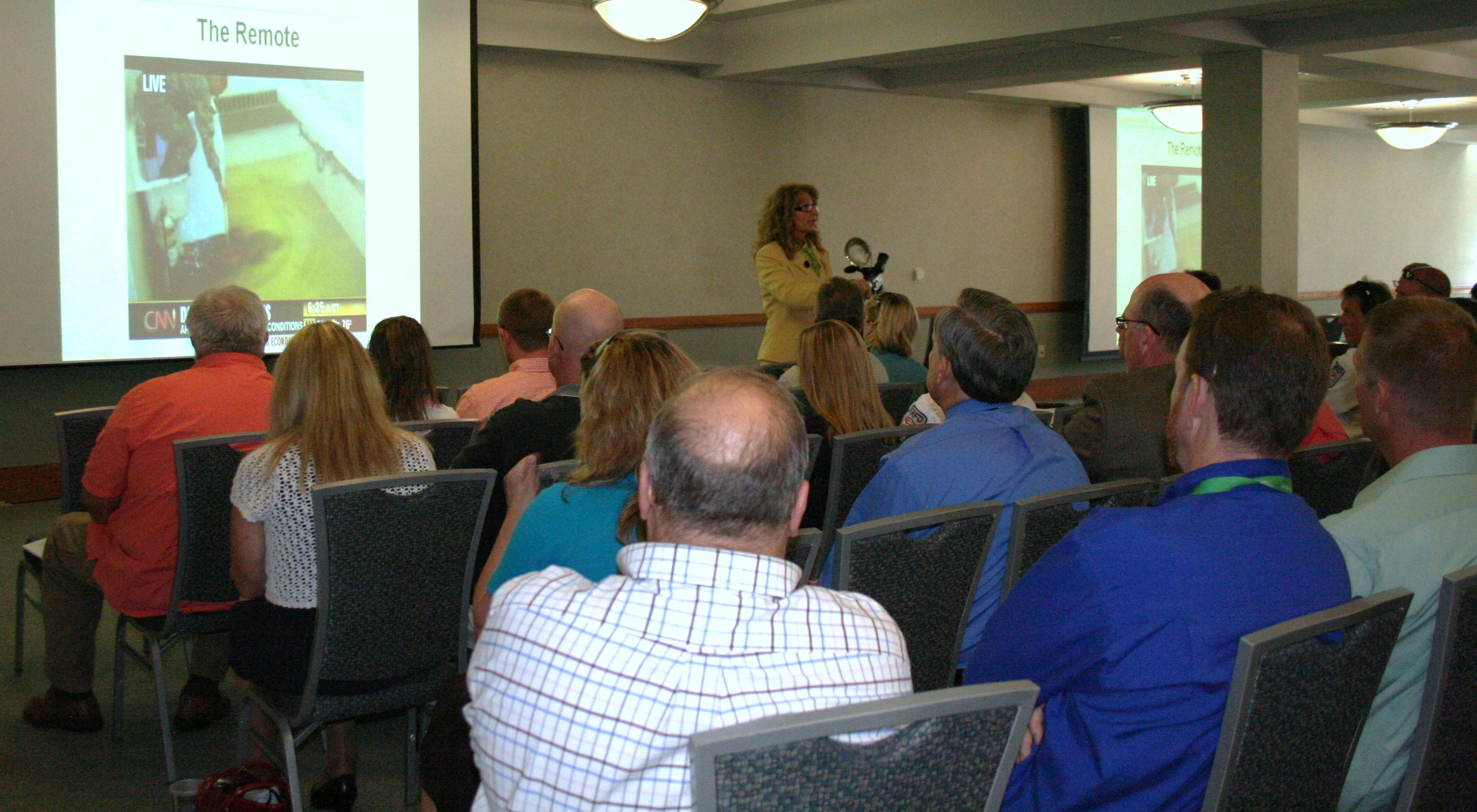FORT RILEY, Kan. - "It is vital that we continue to communicate clearly to the American public about the 'what' and 'why' our Army is doing on their behalf," said Col. James Hutton, chief of the community relations division, Office of the Chief of Public Affairs, Headquarters Department of the Army at the Pentagon.
This was the reason for a three-day Mobile Media Training at Fort Riley, conducted by Paula Smith and Valerie Burkes, public affairs specialists, community relations division, OCPA, Aug. 17 to 19 at the U.S. Army Garrison Public Affairs Office.
"This training helps leaders and spokespersons to focus on clarity of message and presenting information in a way that is easily understood by a wide variety of audiences," Hutton said.
Fifty-five people took part in one of the sessions during the three days, which included on-camera interviews.
Smith and Burkes also provided a professional development session Aug. 16 at Riley's Conference Center, in which more than 150 individuals attended.
Members of Fort Riley and the surrounding communities took advantage of the training to better their relationships with local media.
"Effective communication is critical in our mission as civilians in support of the Army," said Traci Scott, regional liaison officer. "In order to effectively communicate, just like any good Soldier, we need to train and continue that training on a regular basis."
Scott said she does not have to do many interviews, but if she's called to do so, she said she believes the key points provided during the training will help her.
"Increasingly, I am interacting with media outlets, and I wanted to learn some basic techniques and rules for successful media engagements," said Bevin Landrum, military liaison officer with the Manhattan Area Chamber of Commerce and a military spouse of 19 years.
"Being an effective communicator is not easy and takes practice," Scott said. "There are a lot of things that one needs to keep in mind when dealing with the media. For example, nothing is off the record, and, be ready for the tough question.
"Good public affairs officers make it look easy, and the only way to get really good at it is to continue to train effectively and train smart. Also, it's great practice to do an on-camera interview with a professional, who can provide quick feedback so you can apply it to your skills."
This was the first training of its kind Scott and Landrum have participated in.
"I've never participated in such practical training," Landrum said. "It's one thing to take a theoretical class for my master's work in public relations, and another to have a reporter ask you tough questions in front of a camera."
First impressions are key to getting the audience to believe you, Landrum said.
"The biggest thing I learned is that I only have 15 seconds - at most - to make an impression," she said. "This means I need to find succinct headlines to convey my intended message. For someone who loves words and talking, it will be a challenge."
"Most Americans don't live near an Army installation, and their impressions of the Army come from the media," said Warren Nordman, deputy chief of the community relations division, OCPA. "It is critical, therefore, that we take every opportunity to engage the media and convey an accurate impression. No one can tell the Army story better than Soldiers and their Families. To communicate it effectively requires some basic skill sets."
Attendees of the training ranged from the chief environmental officer to commanders and military spouses.
"I feel the training helped me realize ways to define, in any media engagement, the perspective from which I'm speaking, and how to find the common messages that bring my work and my personal story together," she said.
Other training seminars similar to the one at Fort Riley have been conducted at Fort Bliss, Texas, and Fort Campbell, Ky.
"It was once said, 'the human mind is a wonderful thing. It starts working the moment you are born, and doesn't stop working until someone puts a camera in your face,'" Nordman said. "It can be a little intimidating, and the DA media training team provides skills and practice to focus spokespeople on being 'message driven, not question driven' in interviews."






Social Sharing